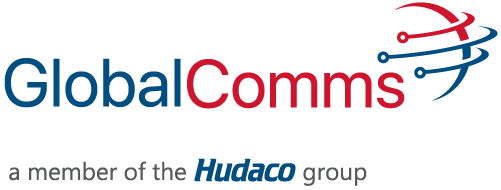Rohill TetraNode
Industry
TETRA for the military
The mission-critical architecture of the TETRA system makes TETRA the answer to the challenging military market. Unlike country or supplier-specific solutions, TETRA is an open standard, meaning that terminals and infrastructures of different suppliers can be used seamlessly together. This allows for competitive, interoperable COTS solutions. For obvious reasons, the encryption and authentication capabilities of TETRA are a key advantage for the military market. Users also benefit from all the increased functionality available from TETRA
TetraNode for the military
Its ‘plug-and-play’ nature makes TetraNode really fast deployable. Setup time is very low and little expertise is needed to make it running. TetraNode also stands out for its robust operation as well as its self-organizing quality, making it resilient to network failures and independent of third-party networks. Components are, for instance, highly shock-resistant. TetraNode fully complies with open IP standards, which facilitates integration with existing IP backhaul networks. Highly recognized TetraNode features for military applications include NATO-compliant call pre-emption and high-grade authentication and encryption. Another significant benefit is the powerful open architecture with open interfaces for network management, applications and IP backhaul integration. All in all, TetraNode is rightfully considered the best solution for military applications.
TETRA for public safety
TETRA is the best solution for public safety applications, offering increased capacity, functionality and security compared to legacy systems. Popular TETRA terminal features for the public safety sector include encryption, authentication and ambience listening. In any case, TETRA offers the highest data capacity and throughput compared to other narrowband PMR standard. Only TETRA can guarantee the availability required for mission-critical communications, which underlines the value for money that TETRA delivers.
TetraNode for public safety
TetraNode offers real advantages to the public safety market. First, it consists of a carrier-grade platform which ensures the highest grade of availability exceeding 99.999%. In addition, integration with modern IP/MPLS-based backhaul networks is fully supported by Tetranode. Using IP/MPLS, Rohill can offer superior redundancy options with less than 50 milliseconds of interruption in case of link or network problems. TetraNode also incorporates powerful dispatch features, including pre-emption of ongoing voice calls, PTT override, a patch functionality to instantly interconnect groups, and discreet as well as ambience listening. All designed to operate in a very user-friendly manner. As a unique capability, TetraNode allows operation and recording of end-to-end encryption from the control room. Finally, TetraNode enables public safety agencies to communicate in closed user groups, but it also allows multi-agency operation.
TETRA for Airports
TETRA leaves DMR far behind when it comes to data capacity and throughput, the number of data messages per second being four times higher. Powerful voice and data capabilities of TETRA include duplex voice calls and IP-packet data. Especially the availability of radios with built-in GPS, Radio User Assignment and intrinsically safe ATEX terminals is highly appreciated in the airport and seaport sectors. TETRA being an open standard and offering interoperability of system elements, customers can choose any mix of technologies, with the full confidence that they will work together seamlessly.
TetraNode for Airports
Apart from the high data capacity and throughput, TetraNode offers a powerful open API interface enabling radio users to connect with the airport’s and seaport’s IT processes. But there is more, such as the seamless operation of group calls from a telephone set without the use of PTT. Or the benefits of Radio User Assignment. With this feature, any radio can be assigned to any user. The entered personnel number becomes the new radio unit number. For airport and seaport companies, where shift work is very common, this is a valuable, cost-saving feature. Finally, TetraNode supports the collective individual call. The first one to answer a call to a pre-defined airport or seaport group, be it a TETRA radio, a telephone user or a dispatcher, gets the call. This combines the advantages of a hunt group with the challenges of multi-type user environments like airports and seaports.
Our Airport customers
Uptime is extremely important in business-critical environments like airports and seaports. No wonder our customers appreciate the 99.999% availability (six minutes per year) of the TetraNode network. They also greatly value the fact that with our future-proof IP-based platform they can seamlessly migrate into the next generation broadband networks based on LTE. Together with the wide range of features and benefits that have resulted in improved operations, it is no real surprise that many airports and seaports have found TetraNode to be the best and most comprehensive solution for their









The TetraNode High End core platform performs the switching of voice and data traffic and provides the signalling between radios and/or between radios and gateways in real time. User traffic (voice and data) and signalling are carried on a single connection between the TetraNode eXchange and Base Station System.
KEY FEATURES
Supports up to 130 sites and 320 transceivers
Proven reliability and carrier-grade availability
Easy configuration and maintenance
Powerful management, dispatch and logging solutions
Easy to integrate with IP backhaul networks
R-827 Tetranode Datasheet >>